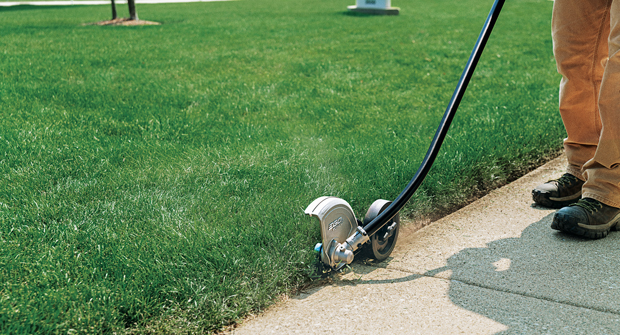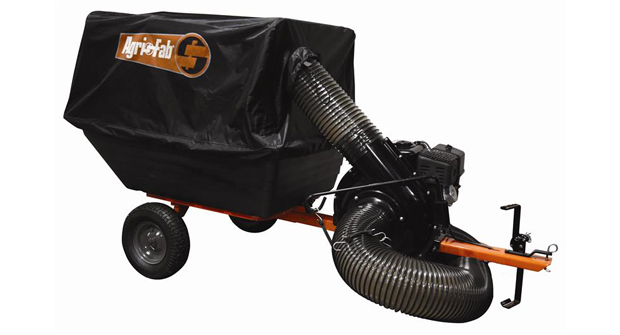
Proper edger operation not only keeps teams safe, but these best practices also reduce the physical toll on operators and improve the finished product.
Stay sharp
Having a dedicated edger that’s well maintained allows landscape professionals to achieve a consistent, straight line on properties, says Josh Dumas, product manager of North American handhelds for Husqvarna.
“It is not uncommon during seasons of high use to see edger blades replaced every one to two weeks — or more often depending on turf or dirt types,” Dumas says. “As the blade wears down on the ends, the user will lose overall cutting depth.”
Dumas says operators should also adjust the guide wheel on the edger to the correct depth. Once the wheel is in place, it will glide easily and do most of the work.
“Another tip to remember is that it is OK if the edger blade makes occasional contact with the surface you are edging against,” Dumas says.
Choosing the right type of edger for the job is also important, Dumas adds. An offset, or curved, shaft edger will have a higher RPM and allow operators to cut more efficiently through softer, finer soil and turf types. The straight shaft edger typically has a lower blade speed but higher torque, which helps cut through harder, denser soil and turf.
“If you are in an area with high clay content or dry, packed soils, consider a straight shaft edger,” Dumas says.
Lighten your load
Edgers are ground-supported tools, though some professionals opt to float them, says Mark Taylor, product manager, Echo. That practice wears on the operator if they edge a lot during the day.
“Let the tool do the work,” Taylor says.
Another misconception is some operators think if they tilt the edger higher, it will cut deeper into the ground, but Taylor says that’s not the case.
“Where the blade is mounted to the gear case is a fixed location from the ground,” Taylor says. “They’ll put it above their arms, but then they just have a loud gas engine right next to their ear.”
When working around corners of hardscape material, landscape pros should edge from both sides instead of trying to edge in a single pass.
“You don’t want to chip away at the sidewalk or driveway,” Taylor says. “It’s bad for the unit and the concrete.”
Maintaining the edger is also important, including changing the air filters, spark plugs, greasing cables, checking the engine and replacing the blade as needed, Taylor says. If operators use edgers frequently or against sidewalks and driveways, the blade will wear out faster.
“As the blades wear out, the edges get rounded out and don’t cut as well into the grass or dirt as the original rectangular shape would,” Taylor says.
Safety first
Achieving a clean edge during the first part of the season helps create a definitive line for the rest of the year, says Gerry Barnaby, director of excitement, Ego.
“Edging defines lines and gives it a crisp look,” Barnaby says. “You lay the groundwork with a stick edger and then the string trimmer after to clean it up. It makes a world of a difference.”
Operators should keep an eye on the job and their surroundings to ensure a straight edge. That’s especially important since they will be walking backward with the edger to prevent it from throwing material back at them. They should also wear the proper personal protective equipment, including eye and ear protection.
“There’s an art to it,” Barnaby says. “This is the finishing touch, but it really has quite an impact on the finished product.”

